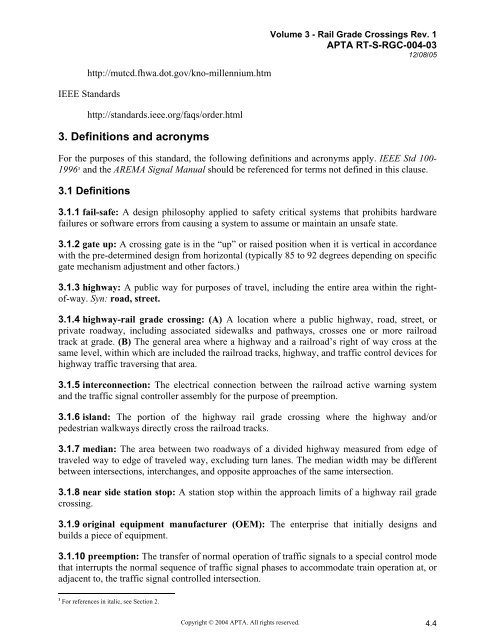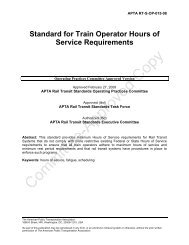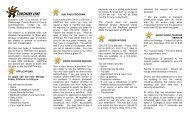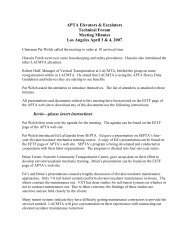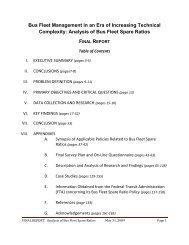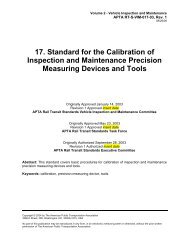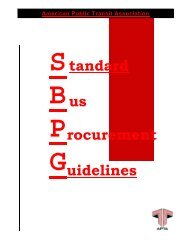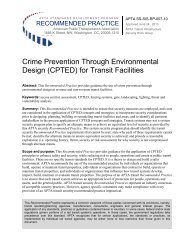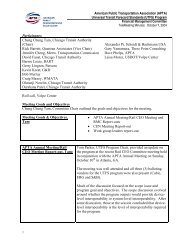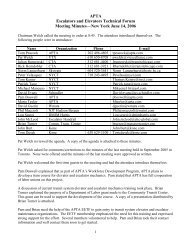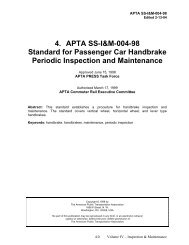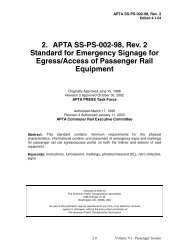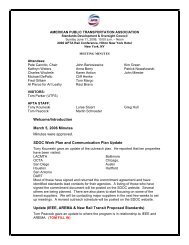Standard for Rail Transit Grade Crossing Warning Systems for Rail ...
Standard for Rail Transit Grade Crossing Warning Systems for Rail ...
Standard for Rail Transit Grade Crossing Warning Systems for Rail ...
You also want an ePaper? Increase the reach of your titles
YUMPU automatically turns print PDFs into web optimized ePapers that Google loves.
http://mutcd.fhwa.dot.gov/kno-millennium.htm<br />
IEEE <strong>Standard</strong>s<br />
http://standards.ieee.org/faqs/order.html<br />
3. Definitions and acronyms<br />
Volume 3 - <strong>Rail</strong> <strong>Grade</strong> <strong>Crossing</strong>s Rev. 1<br />
APTA RT-S-RGC-004-03<br />
12/08/05<br />
For the purposes of this standard, the following definitions and acronyms apply. IEEE Std 100-<br />
1996 1 and the AREMA Signal Manual should be referenced <strong>for</strong> terms not defined in this clause.<br />
3.1 Definitions<br />
3.1.1 fail-safe: A design philosophy applied to safety critical systems that prohibits hardware<br />
failures or software errors from causing a system to assume or maintain an unsafe state.<br />
3.1.2 gate up: A crossing gate is in the “up” or raised position when it is vertical in accordance<br />
with the pre-determined design from horizontal (typically 85 to 92 degrees depending on specific<br />
gate mechanism adjustment and other factors.)<br />
3.1.3 highway: A public way <strong>for</strong> purposes of travel, including the entire area within the rightof-way.<br />
Syn: road, street.<br />
3.1.4 highway-rail grade crossing: (A) A location where a public highway, road, street, or<br />
private roadway, including associated sidewalks and pathways, crosses one or more railroad<br />
track at grade. (B) The general area where a highway and a railroad’s right of way cross at the<br />
same level, within which are included the railroad tracks, highway, and traffic control devices <strong>for</strong><br />
highway traffic traversing that area.<br />
3.1.5 interconnection: The electrical connection between the railroad active warning system<br />
and the traffic signal controller assembly <strong>for</strong> the purpose of preemption.<br />
3.1.6 island: The portion of the highway rail grade crossing where the highway and/or<br />
pedestrian walkways directly cross the railroad tracks.<br />
3.1.7 median: The area between two roadways of a divided highway measured from edge of<br />
traveled way to edge of traveled way, excluding turn lanes. The median width may be different<br />
between intersections, interchanges, and opposite approaches of the same intersection.<br />
3.1.8 near side station stop: A station stop within the approach limits of a highway rail grade<br />
crossing.<br />
3.1.9 original equipment manufacturer (OEM): The enterprise that initially designs and<br />
builds a piece of equipment.<br />
3.1.10 preemption: The transfer of normal operation of traffic signals to a special control mode<br />
that interrupts the normal sequence of traffic signal phases to accommodate train operation at, or<br />
adjacent to, the traffic signal controlled intersection.<br />
1 For references in italic, see Section 2.<br />
Copyright © 2004 APTA. All rights reserved. 4.4


